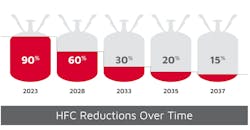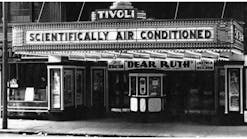Data traffic will triple over the next three years, with demand for equipment to cool data centers growing just as fast, a new report from Lux Research says.
With 50 W of cooling required for every 100 W of server capacity, the demand for cooling equipment, currently at $1 billion per year globally, will grow in lockstep with data centers, increasing more than 60 percent over the next five years.
“The next few years are a once-in-a-generation opportunity to build the infrastructure that will power the Internet of Things,” Alex Herceg, Lux Research analyst and the lead author of the report, titled “Blowing Hot Air – Uncovering Opportunities to Cool the World’s Data Centers,” said.
“The mega-sized data centers have remarkable energy and cooling requirements, and technologies are competing to supply the robust cooling infrastructure necessary to support these facilities at the lowest total cost of operation,” Herceg added.
Lux Research analysts studied 12 established and emerging cooling technologies and compared their energy- and water-input requirements. They found:
• Evaporative cooling has emerged as the dominant method of cooling data centers greater than 1 MW, with a 10-year total cost of ownership of $575 per kilowatt.
• Computer-room air conditioners are best for smaller data centers, with a total cost of ownership of $5,000 to $15,000 for server capacity of 150 kW per square meter, depending on the cost of electricity. Water- and glycol-based cooling technology rank second and third, respectively.
• Climate no longer is king. Traditionally, data centers have been located in cool places. However, benchmark guidelines for temperature and relative humidity have risen. The leading metrics to determine location now are power-usage effectiveness and total cost of ownership.
• While the United States still is the leader in developing large colocation data centers, a robust market is emerging in 12 high-growth regions, with Germany, Turkey, and China leading the way, despite power and water-supply constraints.
To view the research, go to http://bit.ly/Lux_Data.








